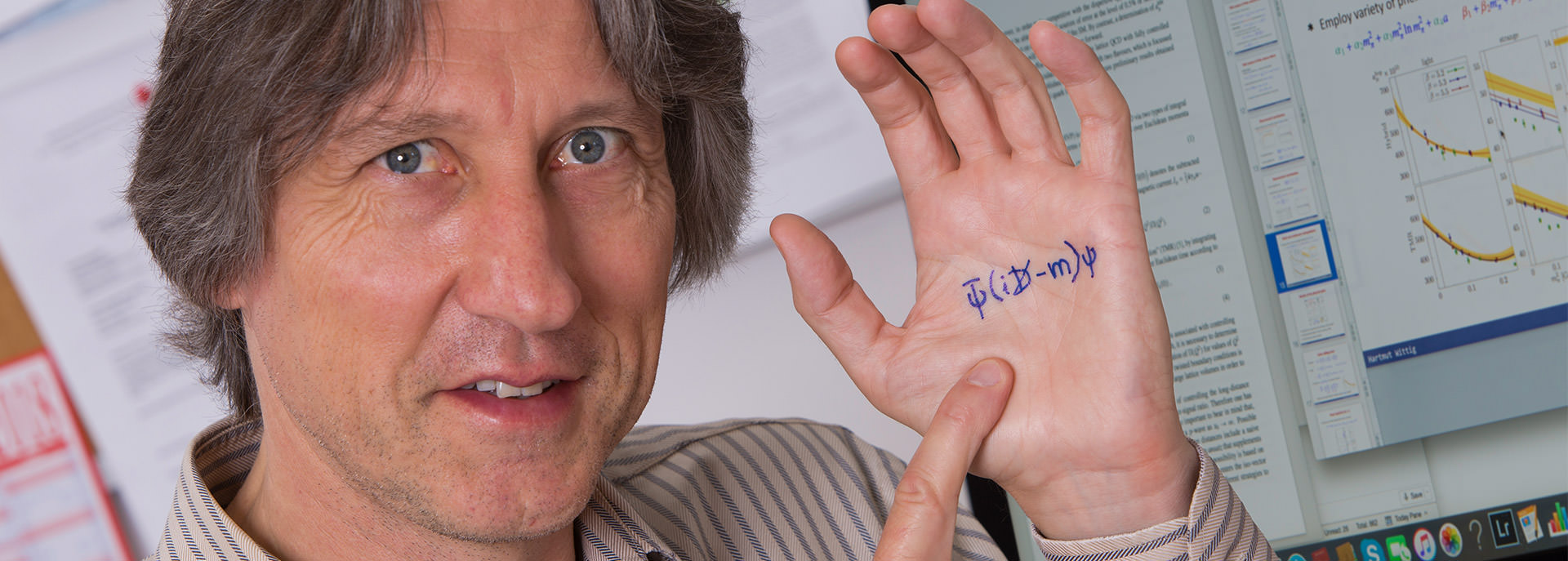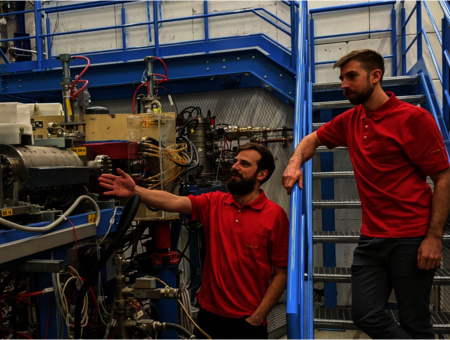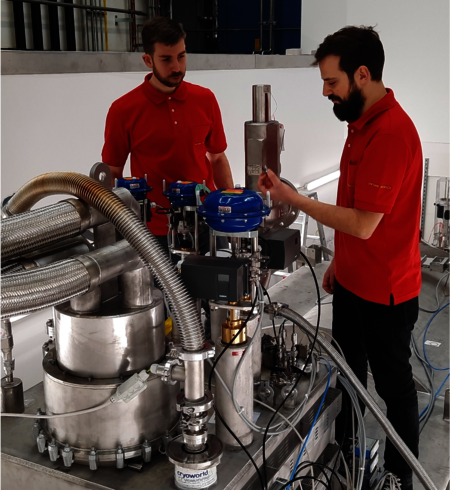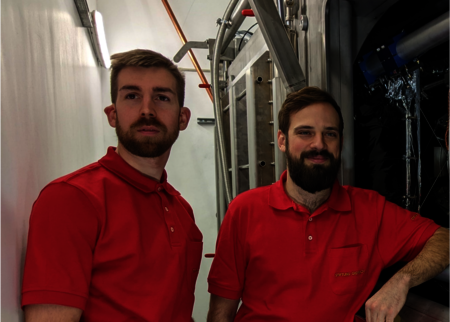Simon Lauber and Julian List, both PhD students in the ACID1 section at the Helmholtz Institute Mainz (HIM), have been awarded a "Giersch Excellence Grant" for outstanding scientific work in the thesis project in the past year. The grant includes a funding sum of 2.500 € each.
The topic of Simon Lauber's PhD thesis is “Advanced numerical and experimental beam dynamics investigations for the cw-heavy ion linac HELIAC (HElmholtz LInear ACcelerator)”.
The HELIAC performance depends critically on the careful design of the normal-conducting injector linear accelerator part and the well-considered way of beam matching from the normal-conducting to the superconducting part of the HELIAC. Within the scope of his doctoral thesis, there were very decisive and forward-looking contributions, which are of immense importance for the realization of the entire HELIAC project. In order to provide for proper matching in the phase space area, the complete six-dimensional phase space must be explicitly known. Recently sufficient experimental data from a novel bunchshape measurement device has been collected to reconstruct the longitudinal beam characteristics with a newly developed algorithm. With this the beam matching is ideally sufficient to exploit the full performance capabilities of the superconducting HELIAC sections. To adapt the transverse phase space to the limited acceptance of the superconducting part, Simon Lauber designed and built a complex beam collimation system and put it to use. This novel beam diagnostic tool enables the pinpoint measurement of the HELIAC acceptance and, together with the method for reconstructing the longitudinal phase space, is the crucial tool for tuning and optimizing the future HELIAC. In addition, essential beam dynamic studies were performed for the construction of a high performance IH drift tube accelerator structure for the acceleration of heavy ions in cw-mode. The APF-structure used for this purpose allows the Alternating Phase Focusing method to be used without any additional focusing lenses, such as quadrupoles and bunchers, so that a very compact and efficient accelerator structure could be designed.
Supervisors: Stepan Yaramyshev, Winfried Barth
Julian Lists PhD thesis is dedicated to “High power RF-coupling for the superconducting HELIAC RF-cavities”.
The HELIAC is planned as a superconducting continuous wave (cw) heavy ion linear accelerator that comprises novel Crossbar H-mode (CH) cavities. One of the most important key component of RF cavities is the so-called power coupler, which ensures that the RF power provided by the RF transmitter is transferred to the cavity in order to make the electromagnetic fields required for particle acceleration available – there with maximum efficiency and precision. The first operations of the cavity showed that the prototype of the RF-power coupler needs to be further improved. A new version of the coupler has been already designed by Julian List with the main objective to reduce the heat input into the cryostat caused by the coupler. The dimensions of couplers have been evaluated with CST Microwave Studio Suite and cross checked analytically with a so called S-matrix calculation. Besides the coupler has been designed in modular construction. This enables the accessibility and improved maintenance of the power coupler. Meanwhile a prototype coupler has been built and successfully tested at a dedicated coupler test stand, which was specially developed by Simon Lauber for this purpose. Various cryogenic- and RF tests has been conducted at this newly built high tech test stand in order to provide a reliable, fail-safe high power coupler for the longstanding RF-operation of HELIACs superconducting section. A prototype of the coupler is meanwhile successfully accomplished. On the basis of the extensive coupler investigations and prototype testing, the complete series of couplers for all superconducting HELIAC RF-cavities has already been tendered and ordered. The development and scientific study of high-power couplers is the necessary basis for the design of modern high-efficiency accelerators, such as HELIAC at GSI and other ambitious accelerator projects worldwide.
Supervisors: Maksym Miski-Oglu, Winfried Barth





